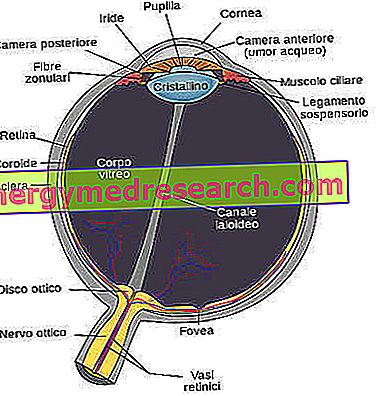What's this
Among the various forms of lentigo, the most common is lentigo simplex, known as juvenile lentigo or freckle . The name "juvenile" is used because this phenomenon mainly affects children, but in reality it is not very appropriate, since lentigo simplex can also occur in adulthood.

Incidence
Lentigo simplex occurs equally in subjects of both male and female sex and of any age, although - in the majority of cases - they appear as early as the first years of life of the individual.
Nevertheless, some subjects are genetically predisposed to lentigo simplex, in particular people with fair skin (phototypes I and II) and red hair.
Causes
In the case of lentigo simplex, melanocytes proliferate along the basal layer of the epidermal surface, accumulating excessive amounts of melanin. However, we cannot talk about illness, because lentigo simplex cannot lead to medical consequences, nor can it cause pathological disorders.
However, in the etiology of lentigo simplex, there seems to be also the involvement of a genetic component that predisposes to the development of the "disorder".
Features
From the clinical point of view, lentigo simplex looks like a lenticular and roundish spot, whose color fades from hazel to dark brown; the spot usually has a small black point in the center, almost imperceptible, and its diameter does not exceed 6 millimeters.
The margins of lentigo simplex, although irregular and jagged, are always well defined. As mentioned, the lentigo simplex can be isolated, disseminated in the body or present themselves piled up to each other in preferential areas (face), constituting spots of consistent extension.

Unlike solar lentigo and freckled lentigo, lentigo simplex have no correlation with sun exposure: to be clearer, lentigo simplex can be enhanced by luminous radiation, but the sun is not the cause that triggers them, like instead we will see for lentigo senili and for solar ones. Not surprisingly, lentigo simplex also occurs in areas that are not frequently exposed to the sun.
Melanoma
Relationship between Lentigo Simplex and Melanoma
Particular attention is reserved for some affected subjects: in the event that the clinical picture of lentigo simplex is related to genetic situations of melanoma, the diagnosis must be more careful and scrupulous, since the patient presents a certain risk that lentigo simplex progresses into pathological forms (skin cancer). If the subject does not associate with family histories of melanoma, it is very unlikely that lentigo will evolve into morbid forms.
Types of Lentigo Simplex
Types of Lentigo Simplex and any associated diseases
Some particular meanings of lentigo simplex deserve further study, since, in some cases, they are associated with pathologies of which they constitute a clinical manifestation.
Lentigo simplex on armpits and genitals
Precisely because of the peculiar distribution of the speckles and the melanin pigment, the disorder could be decidedly worrying because it is difficult to interpret. In general, however, it is believed that specks affecting genitals or armpits may not lead to malignant tumors, unless alterations in cellular composition (atypia) are ascertained.
Black freckles
These are excessively pigmented lentigo simplex, so that the spots appear black to the eyes. Also in this variant of lentigo simplex, a malignant form is unlikely, since from the histological point of view, the cellular composition is the same as that of the "classic" lentigo. These spots appear black due to excessive and unregulated pigment production.
Eruptive freckles
In this case, lentigo simplex occur in large numbers over the whole skin within a relatively short period of time (from a few months to a few years). Eruptive freckles are mainly found in adolescents and young adults, but it does not seem to be related to any type of pathology.
LEOPARD syndrome
Also known as multiple freckle disease, "LEOPARD" is the English acronym of L entiggini, abnormalities E lettrocardiographic, hypertelorism OR culare, P olmonary stenosis, A genital charge, Rtardus of growth, deafness ( D eafness), which they represent the clinical picture of the disease. There
LEOPARD syndrome is a rare disease with dominant gene transmission. Lentigo simplex represent the most evident skin manifestation of the LEOPARD syndrome, which appears in infants, worsening during growth. Freckles, brown or black, can cover the entire body surface and do not spread in a preferential locus.
Carney syndrome
It is an autosomal dominant disease that is characterized by cutaneous manifestations such as the appearance of freckles on the face, lips and genital mucosa and blue-colored snow. These manifestations may be associated with testicular tumors, pituitary adenomas, pigmented nodular adrenal hyperplasia, melanotic schwannoma or atrial myxoma. The implications of this syndrome can be tragic and, in many cases, death occurs due to atrial myxoma.
Peutz-Jeghers syndrome
It is an autosomal dominant disease characterized by freckles that are mainly located in the periorifizial areas, on the oral mucosa and on the fingers, associated with gastrointestinal hamartomatous polyps. The syndrome usually begins between 20 and 30 years of age. The transformation of polyps into malignant pathologies is not very frequent.
Treatments
In some cases - but not in all - lentigo simplex regress spontaneously. If this is not the case, the dermatologist can advise on resolving treatments, partial or total: use of depigmenting substances (kojic acid and retinoic acid in particular), peeling, diathermocoagulation, laser.
Even the cosmetics industry offers some useful products to conceal lentigo simplex: foundation, blush and colored earth will certainly not be decisive methods for stains, but they certainly represent a valid method to cover them. Obviously, cosmetics must be chosen with care and attention: the products must not be irritating and aggressive, since they could aggravate the disorder, highlighting lentigo simplex more.

However, not everyone considers lentigo simplex as an imperfection to be treated, on the contrary, many people consider them as a distinctive trait that must be valued.



